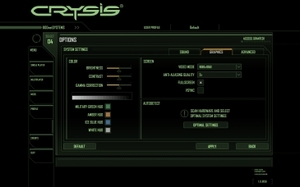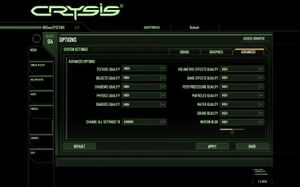Crysis
Publisher: Electronic ArtsWe patch Crysis to v1.21 and run it in DirectX 10 mode with High detail settings. We use 1,680 x 1,050 with 2x AA and no AF to give a reasonably real-world test without the risk that the graphics card will be a limiting factor to CPU performance.
We load a save game in the Relic level and play the game for roughly three minutes, following a strictly defined sequence of actions and movements. We repeat this test three times, or until a reliable set of results is achieved. The consistent results are then averaged to give the figures below.
This is the best way to test how a CPU affects game performance, as the game will be generating AI and physics and game rules for the CPU to perform. A timedemo addresses a CPU in a noticeably different way.
Crysis loves a fast multi-core CPU, though even the 2.66GHz 920 needs a bit of overclocking to get Crysis super-smooth and jitter-free - dipping down to a minimum of 24fps could mean that really geometry-intense scenes might stutter. At 4GHz, the minimum was 32fps, but we'd not recommend you run your CPU day-in, day-out with quite as much voltage or frequency as we've used for this test.
The higher memory frequency of the 920 after overclocking (see page 3 for more on this) explains the 32fps minimum while the slower memory of the 965 EE and 975 EE when overclocked could only give us a minimum of 31fps. We also didn't see any difference in frame rates between the two EE CPUs when both were overclocked. This could be a limitation of our GeForce GTX 280 graphics card, but we'd need an even faster CPU to verify this.

MSI MPG Velox 100R Chassis Review
October 14 2021 | 15:04











Want to comment? Please log in.